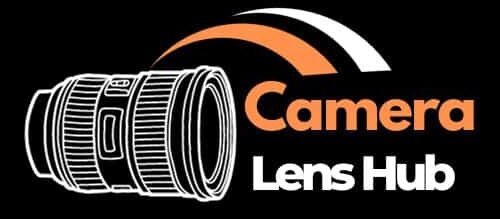If you’re a photography enthusiast, you may have come across the term “radioactive lenses” when researching vintage camera equipment. The idea of using radioactive materials in lenses might seem concerning, but the reality is far less dramatic than it sounds. Many older camera lenses, particularly those produced in the mid-20th century, contain small amounts of radioactive thorium in the glass elements. This was done intentionally by lens manufacturers to improve optical performance by increasing the refractive index of the glass. While thorium is indeed radioactive, the levels found in camera lenses are extremely low and pose no health risks to photographers using them.
The radiation exposure from these lenses is negligible compared to natural background radiation. This intriguing phenomenon raises questions and sparks curiosity about Why camera lenses are radioactive and the origins and implications of radioactivity in camera lenses. In this article, we’ll explore the history of radioactive lenses, the science behind their manufacture, and the potential risks and concerns associated with their use. By the end, you’ll have a better understanding of why some vintage lenses are radioactive and why it’s not something to worry about for photographers.
Understanding Why Are Camera Lenses Radioactive:
In the mid-20th century, thorium oxide was added to the glass used in some camera lenses to help correct chromatic aberration and improve image quality. Thorium has a high refractive index, which helps bend light more than regular glass. Lenses with thoriated glass were produced by many manufacturers, including Nikon, Canon, Pentax, Minolta, and Leica. The radioactivity comes from the fact that thorium-232 is a naturally occurring radioactive isotope that undergoes alpha decay.
As it decays, it emits alpha particles and transforms into radium, radon, and other radioactive elements. This decay process continues down the thorium decay chain. However, the amount of thorium used in lenses is very small, typically less than 10% of the glass composition. As a result, the radiation levels are extremely low and not considered harmful to photographers using the lenses. The alpha particles emitted by thorium cannot penetrate the lens barrel, camera body, or even the outer layer of skin.
The History of Radioactive Lenses:
The use of thorium in camera lenses dates back to the 1940s and 1950s. Thorium oxide was added to the glass formula to increase the refractive index, which helped correct chromatic aberration and improve image sharpness. This was particularly important for wide-angle lenses, where chromatic aberration is more pronounced. Many major camera manufacturers, such as Nikon, Canon, Pentax, Minolta, and Leica, produced lenses with thoriated glass during this period. Some of the most well-known examples include the Nikon 35mm f/1.4 and 50mm f/1.2 lenses, as well as the Canon FL and FD series lenses.
The Science Behind Radioactive Lenses:
Thorium-232 is a naturally occurring radioactive isotope that emits alpha particles as it undergoes radioactive decay. The thorium decay chain includes several other radioactive elements, such as radium and radon. When thorium oxide is added to glass, it becomes part of the glass matrix. As the thorium decays, it emits alpha particles, which have very little penetrating power and can be blocked by a sheet of paper or the outer layer of skin. The radiation levels are extremely low and not considered a health hazard for photographers using these lenses.
Why Are Some Lenses Made with Radioactive Materials?
The decision to use radioactive materials in lens manufacturing is primarily driven by optical considerations. Thorium-containing glass offers optical characteristics that are advantageous for lens design and performance. These include:
- High Refractive Index: Thorium oxide significantly increases the refractive index of glass, allowing lens designers to create lenses with fewer elements while achieving desired optical properties.
- Low Dispersion: Thorium-based glass exhibits low dispersion, reducing chromatic aberration and enhancing the overall image quality, particularly in high-performance lenses.
- Thermal Stability: Thorium glass is known for its thermal stability, making it suitable for use in lenses subjected to varying environmental conditions.
These optical benefits made thorium-containing lenses popular among photographers and lens manufacturers during the mid-20th century. However, advancements in optical technology and concerns about radiation exposure have led to a decline in the use of radioactive materials in modern lens manufacturing.
Radioactive Decay and Radiation Exposure:
The radioactive decay of thorium in camera lenses primarily emits alpha particles, which have low penetrating power and are easily stopped by materials such as glass or even the outer layers of the skin. This means that the radiation emitted by thorium-containing lenses is generally contained within the lens glass and does not pose a significant risk to users under normal conditions.
Furthermore, the level of radiation emitted by these lenses is typically low and well below regulatory limits established for consumer products. Studies evaluating the radiation exposure from thorium-containing lenses have consistently found them to be within safe limits.
Risk Assessment:
Here are the main risks associated with using old camera lenses that contain radioactive materials:
1. External radiation exposure:
- Intact lenses pose a negligible risk from external radiation as thorium and radium emit alpha particles, which can’t penetrate the skin. Beta/gamma risks are also low due to minute quantities.
2. Dust inhalation:
- If lenses are cracked or damaged, there is a potential risk of inhaling radioactive dust from the lens materials. Internal dust contamination carries greater risks than external exposure.
3. Accidental ingestion:
- Again, this risk would mainly arise from damaged lenses where mouth contact with internal dust/crumbs is possible. Ingesting radioactive particles poses internal irradiation risks.
4. Lens repair risks:
- Old lenses containing thorium should not be cracked open or repaired in a way that could generate airborne dust without proper precautions and ventilation.
5. Cross-contamination:
- Radioactive dust on lenses handled without protection could potentially spread to other surfaces, cameras or objects and cause further exposure risks.
6. Long-term health effects:
- While single exposures from old lenses pose little risk, internal contamination over many years could potentially increase long-term cancer/health risks depending on radionuclide and exposure level.
7. International transport regulations:
- Some countries have strict import rules for radioactive materials, so shipping lenses internationally requires ensuring contents meet applicable transport standards.
Regulatory Measures and Contemporary Perspectives:
Here are the key points on regulatory measures and contemporary perspectives on radioactive camera lenses:
- In the late 1950s, the U.S. Atomic Energy Commission began restricting the use of thorium and other radioisotopes in products.
- By the 1960s, camera lens manufacturers had voluntarily phased out thorium-doped glass.
- Modern regulatory limits for thorium in industrial materials are typically a few parts per million or less.
- The EU effectively bans new thorium uses unless strictly controlled and authorized.
- Intact vintage lenses below certain activity thresholds require no remedial action.
- Some jurisdictions now require radiation surveys of photographic equipment to check for contaminated lenses that could pose dust inhalation risks.
- Damaged lenses emitting over 1 millisievert per hour may face disposal restrictions as radioactive waste.
- International shipment of radioactive lenses is regulated to prevent cross-border concerns.
Contemporary Perspectives:
- The scientific consensus is intact, properly stored lenses pose a negligible risk.
- However, some adopt an abundance of caution and avoid known radioactive lenses.
- Institutions have surveyed collections and display intact lenses but may avoid acquiring new thoriated pieces.
- Online discussions see polarized views between dismissing risks versus radiophobia.
- A balanced view acknowledges scientific evidence and individual risk tolerance levels.
- Markets for vintage radioactive lenses are growing as collectors value heritage but disclosure of thorium content remains important.
- Respecting both the historical and safety aspects of these artefacts seems a sensible perspective overall.
Conclusion: Why Are Camera Lenses Radioactive:
In conclusion, the historical use of radioactive thorium and occasionally radium in special camera lenses were products of the materials science and technology of their time. While allowing for sharp, high-quality optics, these elements posed tiny radiation risks even back then. With the phasing out of thorium glass by the 1960s and modern regulatory standards, intact vintage radioactive lenses present negligible health hazards today according to scientific consensus. Their safekeeping and study maintain cultural and scientific interest in photographic heritage. With disclosure and responsible handling, collectors can appreciate these artefacts while balancing radiation understanding and individual risk perspectives.
People May Also Ask
Q. What is thoriated glass, and why is it used in camera lenses?
A. Thoriated glass contains thorium dioxide, enhancing optical properties like light transmission and reducing aberrations, improving lens performance.
Q. What are the potential health risks associated with radioactive lenses?
A. Prolonged exposure to radiation emitted by radioactive lenses can lead to lens yellowing and pose health hazards to users.
Q. How do regulatory bodies oversee the use of radioactive materials in lenses?
A. Regulatory bodies like the EPA and NRC enforce strict guidelines to ensure the safe handling, distribution, and disposal of radioactive lenses.
Q. What materials are commonly used in modern lenses as alternatives to thoriated glass?
A. Modern lenses often feature ED and SD glass, fluorite, and advanced optical glasses to achieve optimal imaging characteristics without radioactivity.
Q. What is the historical significance of radioactive lenses in photography?
A. Radioactive lenses were pioneers of optical innovation, contributing to sharper images, but are now valued as collectables due to their unique characteristics.

